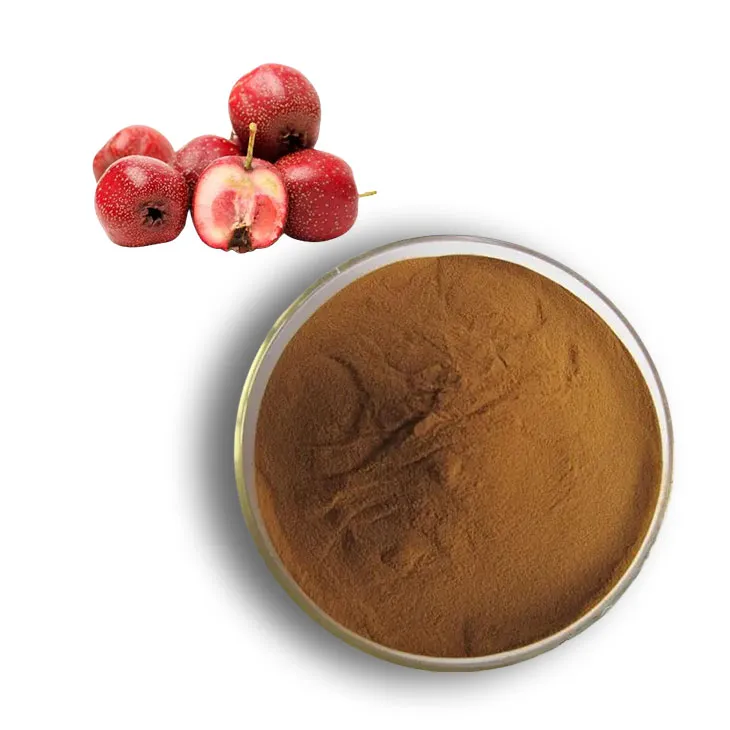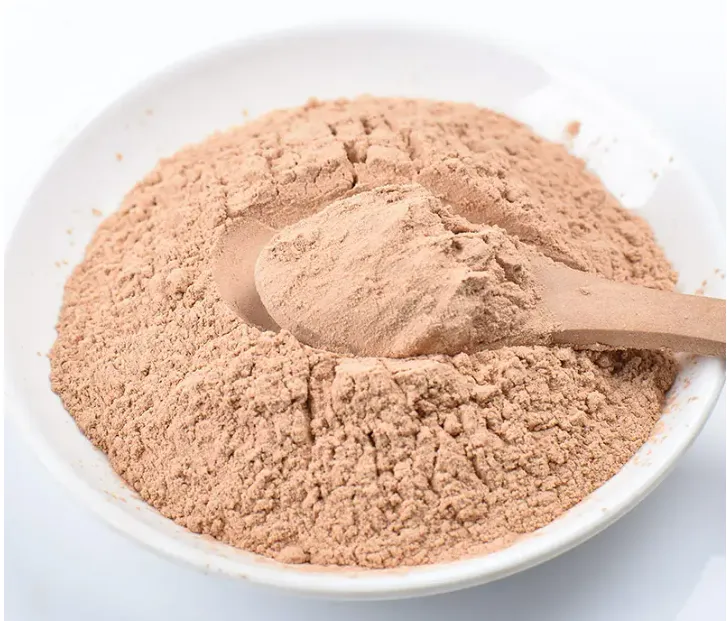- 0086-571-85302990
- sales@greenskybio.com
Hawthorn extract: nature's best - kept secret.
2024-11-12

1. Introduction to Hawthorn
The hawthorn plant is a remarkable gift from nature. It has a long history of use in various cultures around the world. Hawthorn can be found in different regions, adapting to a variety of climates and soil conditions. It is often recognized by its thorny branches and clusters of small fruits. These fruits, which are the main source for Hawthorn Extract, are typically bright red when ripe, adding a splash of color to the landscape.
In traditional Chinese medicine, hawthorn has been used for centuries. It was highly regarded for its potential in promoting digestion and improving blood circulation. In European cultures as well, hawthorn has been a part of folk remedies. The plant was used to treat heart - related ailments and was believed to have a positive impact on overall well - being.

2. Health - Promoting Aspects of Hawthorn Extract
2.1 Digestive Health
Hawthorn Extract may offer significant benefits for digestive problems. It enhances the function of the gastrointestinal tract in several ways. One of the main mechanisms is by increasing the production of digestive enzymes. These enzymes play a crucial role in breaking down food, allowing for better absorption of nutrients. For example, amylase, which is responsible for breaking down carbohydrates, may be produced in greater quantities with the help of hawthorn extract.
Moreover, hawthorn extract can also help in relieving indigestion. It has the ability to soothe the stomach lining, reducing irritation and discomfort. This is especially beneficial for those who suffer from occasional overeating or consuming foods that are difficult to digest. Hawthorn extract can act as a natural remedy to calm the digestive system and prevent issues such as bloating and gas.
2.2 Stress and Anxiety Relief
In modern life, stress and anxiety have become common problems. Hawthorn extract shows potential in relieving stress and anxiety due to its mild sedative effect. The active compounds in hawthorn extract interact with the body's nervous system, promoting a sense of calm and relaxation. It does not cause the drowsiness that some strong sedatives may induce, making it a more suitable option for daily use.
Research has suggested that hawthorn extract may influence the levels of certain neurotransmitters in the brain, such as serotonin. Serotonin is often referred to as the "feel - good" neurotransmitter, as it is associated with mood regulation. By potentially increasing serotonin levels, hawthorn extract can contribute to an improved mood and a reduction in feelings of anxiety.

3. Heart - Health Benefits
Hawthorn extract has long been associated with heart - health benefits. It can help in improving the function of the heart muscle itself. This is achieved through its ability to enhance the contractility of the heart. In other words, it helps the heart pump blood more effectively throughout the body.
Another important aspect is its potential in reducing blood pressure. High blood pressure is a major risk factor for various cardiovascular diseases. Hawthorn extract may act on the blood vessels, causing them to relax and widen. This dilation of blood vessels leads to a decrease in blood pressure, reducing the strain on the heart and the entire cardiovascular system.
Furthermore, hawthorn extract may also have a positive effect on cholesterol levels. It can help in reducing LDL (low - density lipoprotein) cholesterol, which is often referred to as "bad" cholesterol. At the same time, it may have a beneficial influence on HDL (high - density lipoprotein) cholesterol, the "good" cholesterol, helping to maintain a healthy balance in the body.

4. Extraction Methods
There are several methods for extracting hawthorn extract, each with its own advantages and considerations.
4.1 Solvent Extraction
Solvent extraction is one of the commonly used methods. In this process, a suitable solvent, such as ethanol or water, is used to extract the active compounds from the hawthorn fruits or leaves. Ethanol is often preferred as it can dissolve a wide range of compounds effectively. The hawthorn material is soaked in the solvent for a certain period of time, allowing the active components to be transferred into the solvent.
However, when using solvent extraction, it is crucial to ensure that the solvent is completely removed from the final extract. Any residual solvent can pose potential health risks and may also affect the quality and taste of the extract.
4.2 Supercritical Fluid Extraction
Supercritical fluid extraction is a more advanced method. In this case, a supercritical fluid, usually carbon dioxide, is used as the extracting agent. Carbon dioxide in its supercritical state has properties that are between those of a gas and a liquid. It has excellent penetration ability and can selectively extract the desired compounds from the hawthorn material.
This method has the advantage of being more environmentally friendly compared to solvent extraction, as carbon dioxide is a non - toxic and easily removable gas. Also, it can produce a purer extract with a higher concentration of active compounds.
5. Quality Control of Hawthorn Extract
Quality control is of utmost importance when it comes to hawthorn extract products. Consumers need to be assured that they are getting pure and effective products.
5.1 Raw Material Selection
The first step in quality control is the careful selection of raw materials. Only high - quality hawthorn fruits or leaves should be used. This means choosing plants that are grown in suitable environments, free from pesticides and other contaminants. Organic hawthorn sources are often preferred as they are less likely to contain harmful chemicals.
5.2 Standardized Extraction Processes
Once the raw materials are selected, the extraction process must be standardized. This ensures that the same quality and quantity of active compounds are obtained in each batch of extract. Strict control of factors such as extraction time, temperature, and solvent - to - material ratio is necessary. By following standardized procedures, manufacturers can produce consistent and reliable hawthorn extract products.
5.3 Testing for Purity and Potency
After extraction, the hawthorn extract should be thoroughly tested for purity and potency. Analytical methods such as high - performance liquid chromatography (HPLC) can be used to identify and quantify the active compounds in the extract. This helps to ensure that the product contains the expected levels of beneficial substances and is free from impurities.
Testing for heavy metals and microbial contamination is also essential. Any presence of heavy metals such as lead, mercury, or cadmium can be extremely harmful to human health. Microbial contamination, including bacteria, fungi, and yeasts, can cause spoilage and pose a risk of infection. Only products that pass these strict purity and potency tests should be made available to consumers.
6. How to Incorporate Hawthorn Extract into Your Diet
Hawthorn extract can be easily incorporated into your diet in various ways.
- Hawthorn Extract Supplements: These are available in the form of capsules or tablets. They are a convenient option for those who want a precise and consistent dosage. When choosing a supplement, it is important to look for a reputable brand that adheres to strict quality control standards.
- Hawthorn Tea: Hawthorn tea is a popular and refreshing way to consume hawthorn extract. The dried hawthorn fruits can be steeped in hot water for several minutes to make a delicious and health - promoting tea. You can add a little honey or lemon to enhance the taste.
- Hawthorn - Infused Foods: Hawthorn extract can also be used in cooking. For example, it can be added to jams, jellies, or fruit compotes. The tart and slightly sweet flavor of hawthorn can add a unique taste to these products. Additionally, hawthorn extract can be incorporated into smoothies for an extra health boost.
7. Precautions and Considerations
While hawthorn extract offers many potential health benefits, there are also some precautions to keep in mind.
- Drug Interactions: Hawthorn extract may interact with certain medications, especially those used for heart conditions. For example, it may potentiate the effects of blood - thinning medications. Therefore, it is important to consult a healthcare provider before starting to use hawthorn extract if you are taking any medications.
- Allergic Reactions: Some individuals may be allergic to hawthorn. Allergic reactions can range from mild skin rashes to more severe symptoms such as difficulty breathing. If you experience any adverse reactions after consuming hawthorn extract, discontinue use immediately and seek medical attention.
- Dosage: It is crucial to follow the recommended dosage when using hawthorn extract. Taking excessive amounts may lead to unwanted side effects. The appropriate dosage may vary depending on factors such as age, health condition, and the form of the extract (e.g., supplement, tea).
8. Conclusion
Hawthorn extract is truly nature's best - kept secret. With its wide range of health - promoting properties, from digestive health to stress relief and heart - health benefits, it has the potential to be a valuable addition to a healthy lifestyle. However, proper understanding of its extraction methods, quality control, and precautions is necessary to ensure its safe and effective use. By incorporating hawthorn extract into our diets in a proper and informed way, we can unlock the many benefits that this natural extract has to offer.
FAQ:
What is hawthorn extract?
Hawthorn extract is a substance obtained from the hawthorn plant. It has been used in various cultures for centuries and is known for its potential health benefits.
How can hawthorn extract help with digestive problems?
It may help with digestive problems by enhancing the function of the gastrointestinal tract. This could potentially improve digestion and related functions.
What makes hawthorn extract effective in relieving stress and anxiety?
Hawthorn extract has a mild sedative effect, which is what gives it the potential to relieve stress and anxiety.
What are the common extraction methods for hawthorn extract?
Common extraction methods include solvent extraction, where solvents are used to draw out the active compounds from the hawthorn plant. However, different manufacturers may use slightly different techniques depending on their resources and the desired quality of the extract.
How is the quality of hawthorn extract controlled?
Quality control of hawthorn extract involves several steps. This includes ensuring the purity of the raw materials (the hawthorn plant), proper extraction processes, and testing for contaminants. Manufacturers may also test for the presence and quantity of active compounds to ensure consistency and effectiveness.
Related literature
- The Health Benefits of Hawthorn Extract: A Comprehensive Review"
- "Hawthorn Extract: From Traditional Use to Modern Applications"
- "Quality Assurance in Hawthorn Extract Production"
- ▶ Hesperidin
- ▶ citrus bioflavonoids
- ▶ plant extract
- ▶ lycopene
- ▶ Diosmin
- ▶ Grape seed extract
- ▶ Sea buckthorn Juice Powder
- ▶ Beetroot powder
- ▶ Hops Extract
- ▶ Artichoke Extract
- ▶ Reishi mushroom extract
- ▶ Astaxanthin
- ▶ Green Tea Extract
- ▶ Curcumin Extract
- ▶ Horse Chestnut Extract
- ▶ Other Problems
- ▶ Boswellia Serrata Extract
- ▶ Resveratrol Extract
- ▶ Marigold Extract
- ▶ Grape Leaf Extract
- ▶ blog3
- ▶ blog4
- ▶ blog5
-
Organic Tongkat Ali extract powder factory.
2024-11-12
-
How to make powder with ashwagandha extract.
2024-11-12
-
Rosehip extract manufacturers from China.
2024-11-12
-
The best cat's claw extract in nature.
2024-11-12
-
Chinese Dandelion Leaf Extract Suppliers.
2024-11-12
-
Honeysuckle Pollen
2024-11-12
-
Clove Powder
2024-11-12
-
Mango flavored powder
2024-11-12
-
Hedyotis Diffusa Extract
2024-11-12
-
Baicalin
2024-11-12
-
Konjac Powder
2024-11-12
-
Chasteberry Extract
2024-11-12
-
Epimedium extract powder
2024-11-12
-
Boswellia Serrata Extract
2024-11-12
-
Curcumin
2024-11-12





















